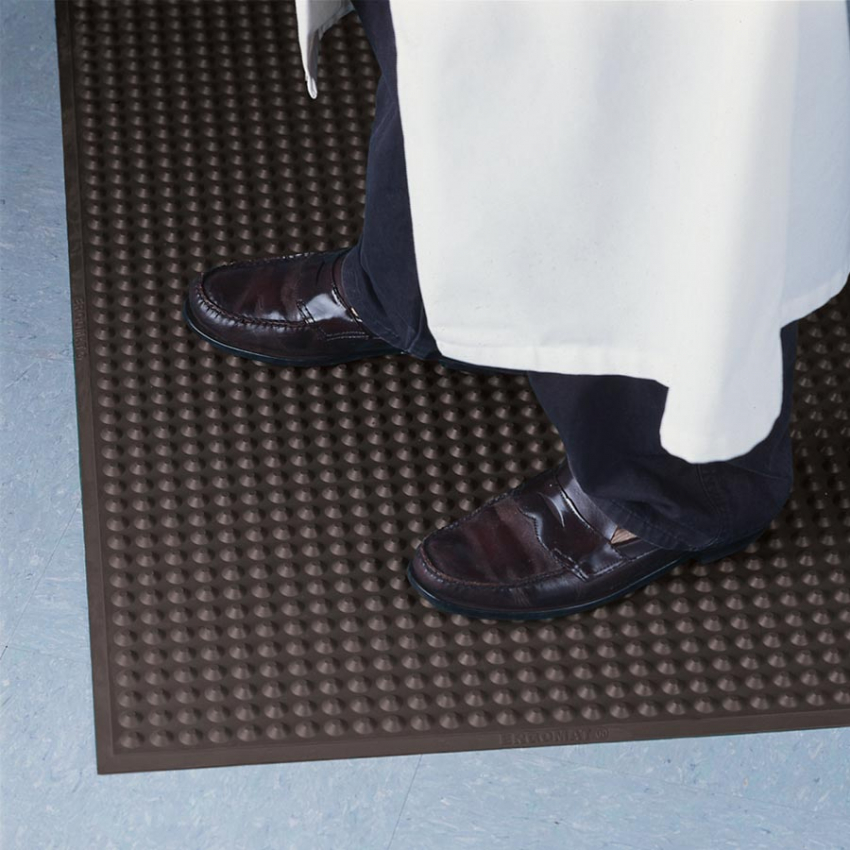














Heavy-duty indoor traffic
This ergonomic mat is made of virgin nitrile rubber. Nitrile does not swell or deteriorate when exposed to oils and chemicals. This makes it perfect for environments where chemical substances are handled.
Available in standard and custom sizes.
Available in ESD and flame-retardant versions , with drainage holes and yellow edging.
2 surfaces: "standard" nitrile and plain nitrile.
Several versions are available:
- NITRIL UNI version for operators on the move.
- NITRIL UNI ESD version for operators who move and handle objects containing electricity.
- NITRIL version for operators who perform light trampling.
- NITRIL ESD version for operators who perform light foot traffic and handle objects containing electricity.
- NITRIL FLAME RETARDANT version .
- Specialized environments with chemicals or oils
- Bevelled edges (possible in yellow)
- Holes or grooves can be added to facilitate the passage of water or air.
- Silicone- and latex-free
- 3-year warranty
![]()
| Ergomat Nitril |
Data sheet
| Surface | Bubbles Uni |
| Location | Interior |
| Properties | Anti-fatigue Draining ESD / AS |
| Composition | Nitrile rubber vierg |
| Thickness | 11 mm |
| Resistant to chemicals | Yes |
| Operating temperature | min -40°C - max 90 |
| Intensity of use | Very intense |
| Hardness | 50-60 Sh A ISO 868 |
Industrial mats meet the needs of ergonomic workstations and employee well-being.
They prevent:
There are many uses for industrial mats:
Safety criteria: The mat must cover the entire workstation, be firmly attached to the floor, not shift or slide, and have bevelled edges to prevent falls.
Thickness and flexibility criteria: Contrary to what you might think, you shouldn't choose a very thick or very soft mat. The mat should have a certain elasticity, but still allow a comfortable standing position, without the user feeling slumped.
Environmental criteria :
Environmental hazard criteria : To establish more precise characteristics for a mat (antistatic properties or fire resistance etc...) we need to take into account the hazards present in the environment where the mat will be installed.
Where hazardous liquids are present in the working environment, the anti-slip properties and chemical resistance of industrial mats should be taken into account. The presence of openings on mats to allow the evacuation of fluids is essential.
Traffic criteria: We need to take into account the traffic that takes place on the equipment: how many workers can walk on it? How often, etc., in order to choose the most suitable mat.
Prevent the many problems associated with poor workstation ergonomics: RSI, static shock, bacterial proliferation, etc.
We offer a wide choice of industrial mats: on rolls, in standard sizes, made-to-measure or modular mats to suit all types of workstations.